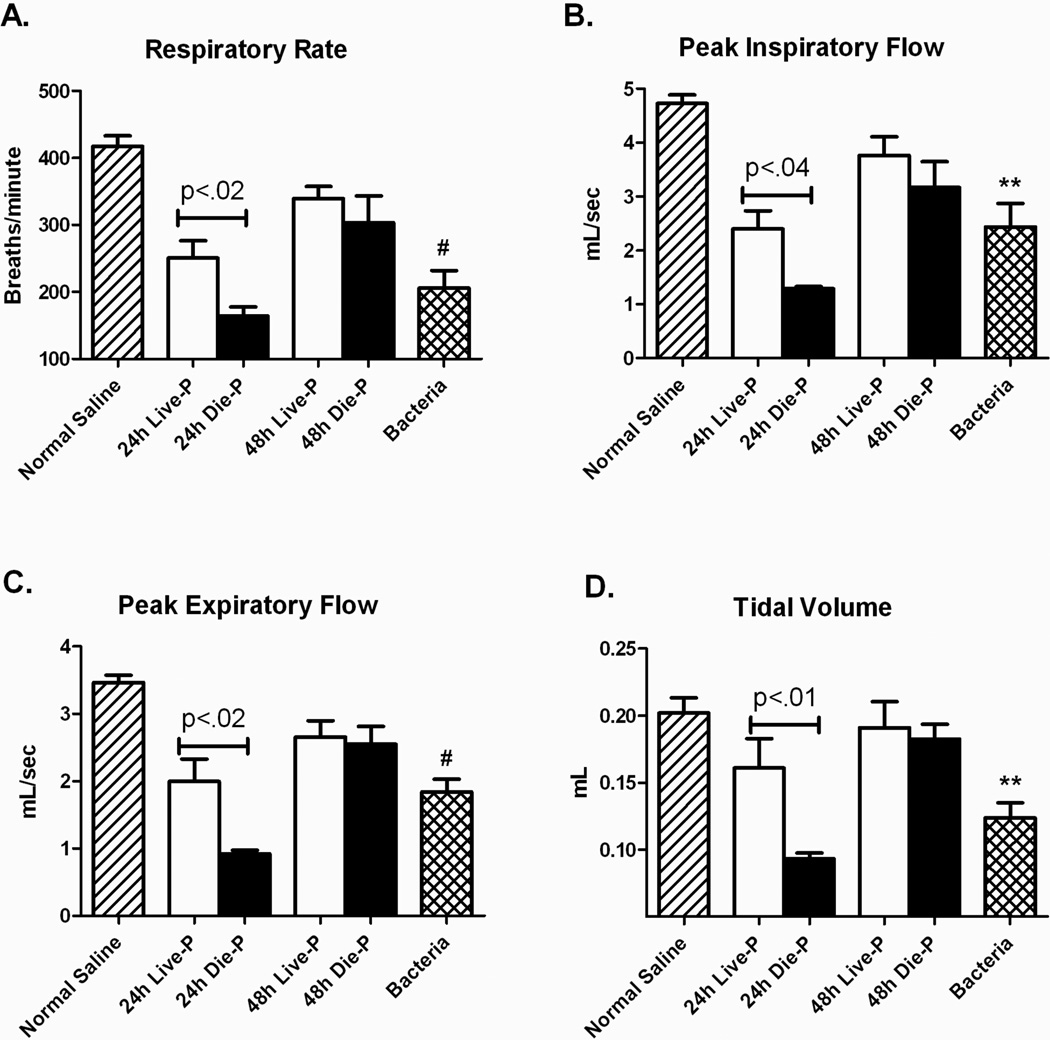Figure 2.
Pulmonary respiratory parameters measured by whole body plethysmography 24 and 48 hours after CLP. Septic mice were separated in predicted to live until 5 days post cecal ligation and puncture, 24h Live-P (n=5) and 48h Live-P (n=7), or die by day 5, 24h Die-P (n=10) and 48h Die-P (n=4), based on the plasma IL-6 cut-offs. Two control groups of mice that were not subjected to cecal ligation and puncture, normal saline (n=8) and bacteria (n=8) were included in the analysis. The respiratory rate (A), peak inspiratory flow (B), and peak expiratory flow (C) were decreased in the septic mice predicted to die compared to the predicted to live group at 24 hours. By 48 hours, respiratory parameters for Live-P and Die-P mice were improving. Despite these changes, the tidal volume was equivalent for CLP mice compared to normal saline (D), except for 24h Die-P whose death was usually imminent. Values are mean ± SEM. There were significant differences between all the groups for all panels, p<.001. The differences between paired groups is indicated by the line. ** = p<0.01, #p<0.001 for bacteria versus normal saline.

